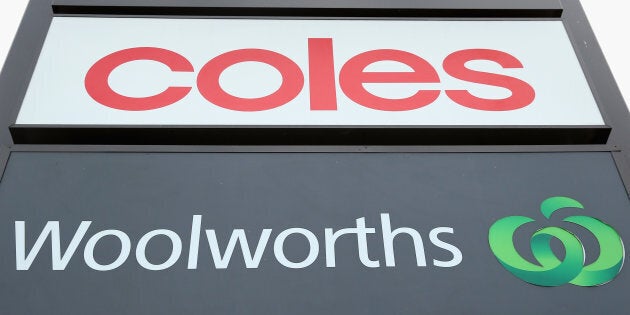
If you're looking for a good economics game to play this summer (and let's face it, who isn't?), then here's one of our favourites. Try seeing how many industries your family can name that are not dominated by a few large players. We guarantee that this isn't a game that will tie up the conversation all night.
In our recent study, published in the December issue of the Australian Economic Review, we calculated market concentration across the Australian economy. Unlike other countries, Australia's government statistician doesn't compile data on market share, so we instead used data drawn from a private firm: IBISWorld Industry Reports. For each of 481 industries, we measured the market share held by the four largest firms, a standard measure of market concentration.
New research points to the risk that a lack of competition might worsen economic inequality.
Applying the rule of thumb that a market is concentrated if the largest four firms control one third or more, we find that more than half of Australia's industries are concentrated. For some industries concentration is higher still. In department stores, newspapers, banking, health insurance, supermarkets, domestic airlines, internet service providers, baby food and beer, the biggest four firms control more than 80 percent of the market.
In many industries, Australia's markets are more concentrated than those in comparable countries. We also find some evidence that the problem is getting worse. For example, the number of mergers and acquisitions has nearly tripled since 1992. Meanwhile, the rate of new business formation is in decline, leading to an overall decrease in the number of firms in the economy.
Market concentration does not necessarily mean reduced competition, but things often tend in that direction. Less competition is associated with higher prices, fewer new businesses, less consumer choice, lower quality, less innovation and, ultimately, fewer jobs and less growth. Worryingly, new research also points to the risk that a lack of competition might worsen economic inequality too.
Jason Furman, the head of President Obama's Council of Economic Advisors, noted seven symptoms that inequality is being made worse by increased market concentration: a reduced share of national income going to workers, a slowdown in the creation of new businesses, worsening wage inequality, a less fluid labour market as workers fear changing jobs, reduced investment by firms with market power, a higher rate of return on capital and, specifically, higher returns on capital for larger businesses.

In Australia, the wage share has fallen over recent decades. The creation of new businesses has similarly slowed-down, with 6,000 fewer businesses created in 2015 than in 2012. Wage inequality has increased. Since 1975, earnings at the 90 percentile have increased three times faster than those at the 10 percentile. The labour market is less fluid. The share of people who have remained with their existing employer between three to five years has increased by 6 percent from 2010 to 2015. Business investment is down by almost a third over the past few years and, although share prices have been fairly flat over the past decade, we have seen a sharp rise in both dividend payments (up 61 percent in 10 years) and housing prices (up 73 percent in 10 years) implying a higher return on capital.
Without firm-level data, we can't be sure whether these trends are driven by the market power of large firms. But to the extent that we can measure it, most of Jason Furman's symptoms seem to be seen in Australia.
An increase in market power is likely to both increase the rate of return on capital and slow the rate of economic growth.
Others have looked at inequality and competition from different perspectives. For example, work by John Siegfried and David Round concluded that about one quarter of rich-listers grew wealthy in an industry that was uncompetitive at the time.
William Comanor and Robert Smiley found that possibly half of existing wealth holdings by the richest 2.4 percent of American households was due entirely to capitalised monopoly gains.
John Creedy and Robert Dixon found that monopoly power has a larger negative impact on lower income groups which depend on government pensions and benefits for their principal source of income.
A similar conclusion flows from Thomas Piketty's model of inequality, in which inequality is said to rise when the rate of return to capital (r) exceeds the rate of economic growth (g). An increase in market power is likely to both increase the rate of return on capital and slow the rate of economic growth.
Overall, our research does not suggest that concentrated markets are solely responsible for rising inequality, but they have likely played a part. The policy response to this challenge need not be radical, either. Australia's penalties for anti-competitive conduct and consumer rip-offs are more lenient than in other countries, and should be raised. The increased revenue could be used to give the Australian Competition and Consumer Commission a bigger litigation budget, a market studies power and an obligation to prioritise investigations of conduct that targets disadvantaged Australians.
With inequality at a 75-year high, and wage growth at a 30-year low, it's time to put markets and middle Australia ahead of monopolies and moguls.
_______________
This is an edited extract of Markets, monopolies and moguls: the relationship between inequality and competition, by Andrew Leigh and Adam Triggs published in the Australian Economic Review.
ALSO ON HUFFPOST AUSTRALIA